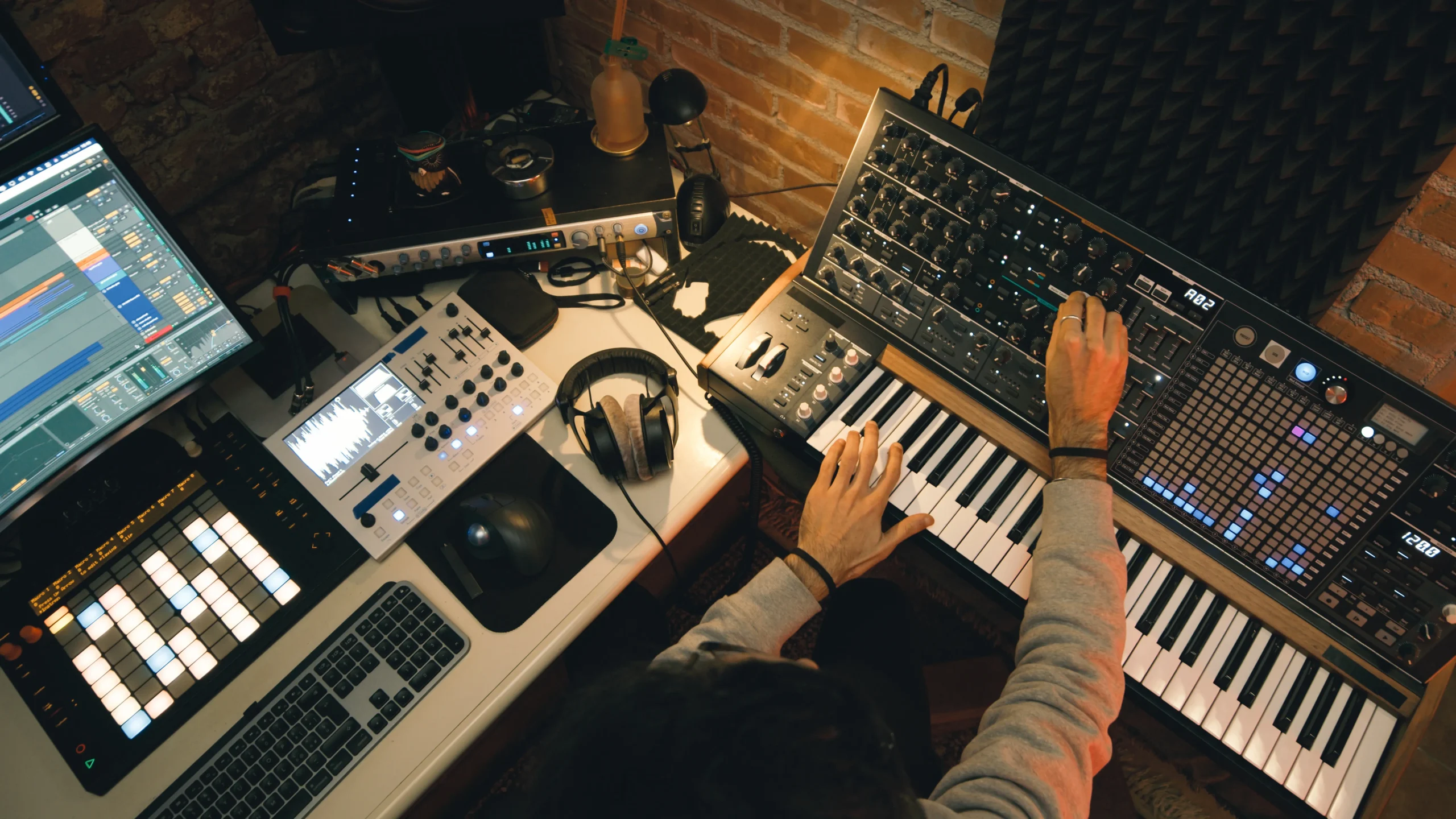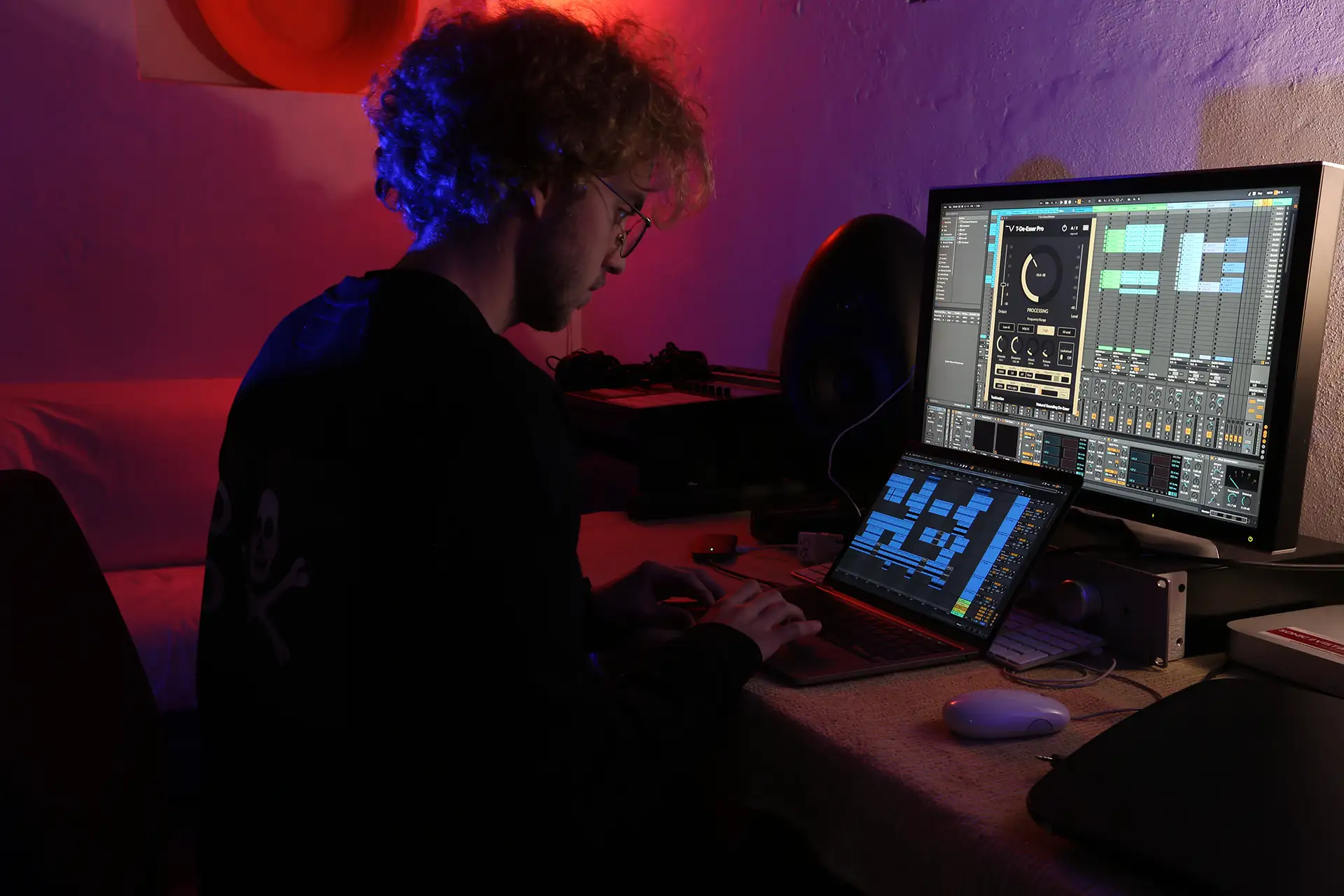In this article:
Electronic music has always been a particularly borderless artistic landscape, with an inclusive and unified culture that belongs to the people of the world and its many dancefloors.
The electronic community is broken down into scenes, where networks of DJs and clubs produce an aesthetic rather than a fixed sense of community, which allows greater room for trans local artistic communication via the music itself. Berlin, London, Detroit and Chicago are all commonly associated with electronic music scenes in the West, but now it’s the turn of the Middle East and cities like Beirut, Cairo, Istanbul and Marrakech.
With such a fluid subterranean cultural network in place, one scene can have a very real impact on another, without the need for the traditional drivers of globalism above ground. This is exactly the exchange that Middle Eastern electronic music hubs are having with the West right now, and the result is an exciting new sound that is influenced by an eclectic range of musical traditions from the region.

Artistry and science
Before we get started, it’s worth noting that feeling and technique are not mutually exclusive components of music production. Rather, they are two sides of the same coin that each have a part to play in the whole process. Like the concept of yin and yang in Chinese philosophy, they are opposite but interconnected forces; feeling has no vehicle without technique, and technique has no inspiration without feeling.
However, where this discussion begins is with the question of how much significance and space you allow both approaches in your own production style. While emotion is not something that can be turned on and off like a tap, there are certain decisions you can make that will determine how easily it can find its way into your creative process when the time is right. Your equipment, workflow and overall production philosophy can be configured to either help or hinder in this regard.
Working with what you’ve got
Often, people mistakenly believe that if they get their hands on an expensive synth, or stack their DAW full of the latest and greatest plugins, that they’ll suddenly start creating masterpieces the likes of which they could never have achieved before. In reality, obsessing over gear takes you away from the simple truth that music is about making people feel something. Every piece of hardware and software should be seen as a means to that end.

The technical side of music production is sellable because it’s quantifiable, and there is a large industry that exists on one level because people can be convinced they need to buy more to be able to reach higher. However, some of the greatest songs ever written were recorded on a shoestring budget with minimal gear, and the reason why they are so beloved is not due to their technical execution, but rather their success in capturing a raw emotion that resonates with the listener.
Electronic music in particular doesn’t require you to have an arsenal of expensive tools to get the job done, and the tracks that make us feel the most often come together quickly. Denis Sulta’s seminal melodic house track It’s Only Real, for example, took 45 minutes to produce and makes use of only nine channels and a handful of stock Ableton Live and free plugins.
The Scottish producer explains that he changed his mindset into “more of a free, expressional way of thinking” as opposed to making a conscious attempt to sit down and program. It’s this instinctual, feeling-led approach to music making that often bears the ripest fruit, as the core emotion behind the track is allowed to be the guiding force.
Striving for imperfection
Bruno Walter, the German conductor and pianist, once remarked “By concentrating on precision, one arrives at technique, but by concentrating on technique, one does not arrive at precision.” Precision can be defined as the quality of being exact and accurate, qualities which we associate with technical mastery, but how perfect do we really want music to be?
Pristine, immaculately edited performances and tracks are all well and good, but in fact it is the imperfections in music that evoke vulnerability and authenticity, allowing the audience to relate to it on an emotional level. Take the recently released Beatles song Now and Then for example. John Lennon’s vocal was extracted from a rough demo where he recorded both piano and vocals on a single track, so it is far from perfect. However, the emotional experience of hearing Lennon’s voice on a new Beatles release far outweighs any technical flaws. In fact, they arguably make it better.
Irregularities in a track – whether it’s singers straining to belt out high notes, guitar players laying down woozy bends, or the warm crackle of analogue recording equipment – have been shown in research to be perceived by listeners as being more expressive. For this reason it’s important to let the humanity in your music show by allowing rough edges and character through when they crop up.
Not sweating the outcome
Ask yourself the question: What is the purpose of production? Is the end goal reached when the readouts on a visualiser show that you have a mix that compares favourably with high-performing tracks out there in the ether? Does success mean a certain number of streams? Or, is it about the sheer joy of creation, of making something out of nothing, pouring your heart into a song and allowing it to be a snapshot of what you’re feeling at that time?

By getting acquainted with the “why”, you’re allowing yourself to connect with your music production on a deeper level. Maybe it is actually all about building technical acumen, or you just really love hardware and software for its own sake. There’s nothing inherently wrong with an emphasis on technique, and we need only look to electronic artists like Deadmau5 and Noisia for examples of music producers who have made their name as supreme technicians.
However, in a world that is increasingly being touched up and fine-tuned by artificial intelligence, the presence of emotion in music is more valuable than ever. Our experiences as feeling beings are precious, and music is a vehicle that we can share with others on an excursion out of our daily lives. How you EQ a snare, or which compressor you choose, while important parts of the process, are really just stops along the way in that journey.
Join Projecta Vibes on this incredible journey of learning and growth. Together, we can create a new standard of excellence in music production.
Discover latests project files, samples and more HERE
Read other articles
 June 4, 2025
June 4, 2025The Rise of the Middle Eastern Sound and its Impact on EDM
The Rise of the Middle Eastern Sound and its Impact on EDM
 April 4, 2025
April 4, 2025Stop Letting AI Master Your Tracks (Here’s What You’re Missing)
Stop Letting AI Master Your Tracks (Here’s What You’re Missing)
 April 4, 2025
April 4, 2025AI Mastering vs Human Ears: Why Real Experience Still Wins
AI Mastering vs Human Ears: Why Real Experience Still Wins

